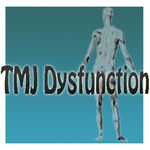What Is the Temporomandibular Joint (TMJ)?
The temporomandibular joint (TMJ) is the hinge joint that connects the lower jaw (mandible) to the temporal bone of the skull, which is immediately in front of the ear on each side of your head. The joints are flexible, allowing the jaw to move smoothly up and down and side to side and enabling you to talk, chew, and yawn.
Temporomandibular disorders (TMD) occur as a result of problems with the jaw, jaw joint and surrounding facial muscles that control chewing and moving the jaw.
The following comments are from Cindy Ballis, daughter of the Sacro Wedgy® inventor and class instructor........
Rather than ever try to diagnose these symptoms we, at Sacro Wedgy®, usually try to help those who have been diagnosed and are seeking help. Once again, we learn by phone calls, letters and often personal experience as to how relaxing on the Sacro Wedgy® may help some with this condition.
I've actually helped a number of sufferers find releif in a 15 to 20 minute sessions with the following process. I learned many years ago that a dentist from Arkansas spent his entire career attempting to prove most TMJ or TMJD symptoms originate in the pelvic girdle. I thought this interesting as most of the people I talk to have had some trauma due to whiplash from an accident or sports event. Years after the trauma is usually when these symptoms start to be somewhat painful.
My routine is to first get them situated with the Sacro Wedgy® under the sacrum and a firm support under the neck allowing the head to drape over the roll so we are using the weight of the head as a natural traction.
After I take them through a complete Sacro Wedgy® release sequence including some extra psoas work and remember, the way we access the psoas is through a gentle non-invasive insertion point pulsing - very important. Then when they are completely relaxed, I will sit at the head of the table and while their head is draped over the roll, I'll do some gentle pressure finger tip work around the jaw line until the joint is somewhat relaxed. Next, while leaving the neck support in place close to the shoulders, I put the Upledger® designed Still Point Inducer in place for the final 5 or 10 minutes.
I know this is not going to be the end all correction for everyone but I've seen people get up after this session with their jaw free to open with no pain. I say it certainly is worth a try. What I've learned over the past 20 years is that once this symptom occurs it can re-activate at any given moment so, now at least there is a simple solution to a not so simple problem.
|
